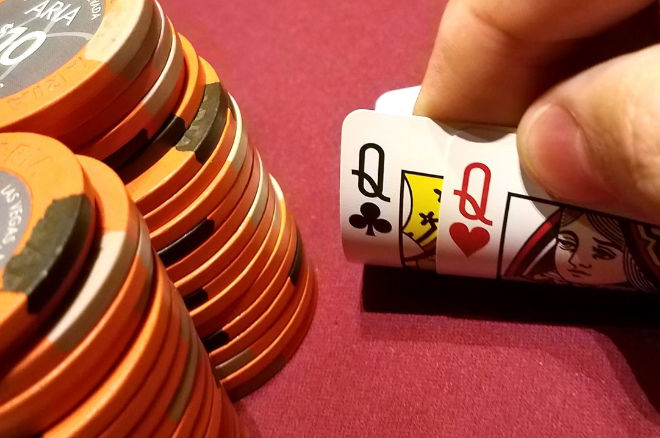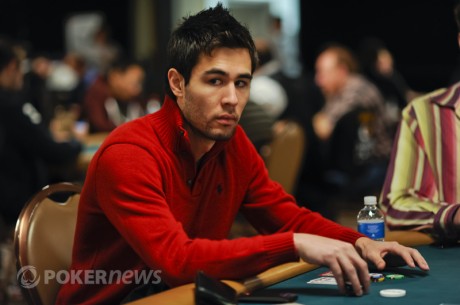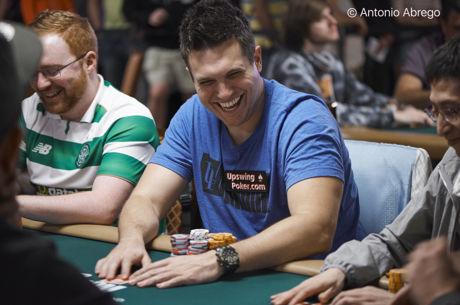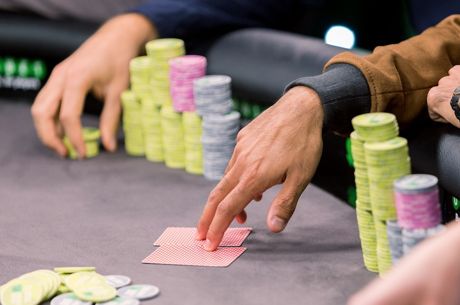3 Expert Tactics Explained by High Stakes Poker Pros

If you��re like most poker players, then you probably prefer to spend time playing rather than working on your game. But you know that you need to study in order to compete with the best players in your player pool, and to crush the weaker ones. The key, then, is to study efficiently.
This is surprisingly difficult to do. One reason why is that it��s easy to get bogged down in theory- and concept-laden training material. Another is that many training resources are incomplete, because they lack elements that are crucial for translating preparation away from the table into actual results at the table.
These shortcomings are just a few of the issues Doug Polk and Ryan Fee sought to address in creating the Upswing Poker Lab. Lab members have access to a well-structured, no-nonsense training course with a very practical bent. Its content is divided into ��modules,�� which cover a broad range of topics, but they also provide instruction on how to implement what��s been learned. What is more, Lab modules are produced by an all-star lineup of Upswing coaches: Doug Polk, Ryan Fee, Parker ��tonkaaaap�� Talbot (a tournament specialist), and Fried Meulders (a 6-max cash game specialist).
Today we��ll discuss 3 strategies taken directly from Lab modules. These strategies, though slightly condensed here, highlight concepts that will immediately improve your win-rate.
1. Don��t play every flush draw the same way
Flush draws are all merely draws, strictly speaking, but that doesn��t mean they should all be played the same way. Consider some variations of flush draws:
- The nut flush draw
- A six-high flush draw
- A one-card flush draw on a monotone board
- A flush draw plus a pair
All of these have different degrees of strength, and although some of their differences seem subtle, in practice they require different strategies. This concept was introduced in the Lab��s ��How to Play Flush Draws�� module.
Let��s take look at two examples that demonstrate this concept.
Suppose that the button open-raises and we call from the big blind with A?2?. The flop then comes K?7?3?. What should we do?
Given that our hand has some showdown value, a check-call is preferable with the nut flush draw.
Now suppose that we hold 6?5? instead. Because our six-high has no showdown value, we can check-raise as a semi-bluff because we have a good amount of equity versus our opponent��s range, and because our combo draw allows us to continue bluffing on most, if not all turn cards.
Also, by bluffing with our weaker flush draws and calling with our stronger ones, here, we push fold-equity with our hands that benefit most from winning the pot on the flop.
For more tips on how to play flush draws effectively, grab Doug and Ryan��s 20 Rules for Playing Flush Draws in 2017 (it��s free!).
2. Use river overbets on favorable board textures
Over-betting on the river is a complex but extremely effective strategy, as it allows you to get the maximum value with your nutted hands while generating as much fold-equity as possible with your bluffs.
Overbetting works best when the board texture is very favorable for your range rather than your opponent��s. One common example of this is when the in-position player is barreling and a straight draw that the out-of-position player can��t have completes on the river. For instance:
Suppose you open-raise from the button with A?9? and the big blind defends (120 big blinds deep). The flop comes Q?J?6? and the action goes check, check. The 10? comes on the turn and the big blind bets, and you call with your open-ender. Finally, the river is the 5? and the big blind bets again.
This river is a perfect spot for an overbet raise because you can have the nut straight��you should almost always play AK this way��and your opponent can not��he would have 3-bet with it preflop. When you actually do have AK and get called, here, you win a huge pot. Meanwhile, you can also overbet raise with a number of bluffs to put your opponent in an excruciating spot with their entire range.
In a module dedicated entirely to this concept, Doug breaks down dozens of examples that warrant an over-betting strategy so that you can confidently overbet in a variety of scenarios.
3. Decrease the size of your continuation bets in multi-way pots
Multi-way pots are among the most misplayed situations in No Limit Hold��em. To address this, Ryan and Doug created a module dedicated to multi-way play specifically.
One common mistake made by many players��even pros��is c-betting too large on the flop against two or more players. There are two notable upsides to using a small c-bet size instead:
- You force players out of the pot for a cheap price
- You can extract value with made hands that you wouldn��t feel comfortable betting otherwise
For example: suppose you raise with A?A? from the cutoff and get two callers: the button and the big blind. The flop comes 10?9?8? and the action checks to you.
Betting a normal size with one pair on this flop is precarious considering how many hands in your opponents�� range have out-flopped your Aces. But checking isn��t an attractive option either because of the many terrible turn cards for your hand.
So, betting small is the perfect option: you will force out hands with equity��like K?Q? and 6?6? ��and it makes it easier to extract multiple streets of value from hands like K?10? (assuming the board runs out clean).
Why join the Lab?
These three strategy examples offer just a brief glimpse at what��s available to Upswing Lab members. Currently, the Lab consists of 48 modules with a new one added every month, and 105 ��Play & Explains,�� with four more added every month.
Altogether, there are hundreds of hours of content to explore in the Lab. Plus, membership also gets you access to a private community of Upswing coaches and players who actively discuss poker strategy.
Doug, Ryan and the gang like to emphasize that the Upswing Lab is the kind of resource they wish they had when they were aspiring to success, both in terms of instructional content and ease of use.
Learn more about the Upswing Lab now!
Sponsor generated content by Upswing Poker








